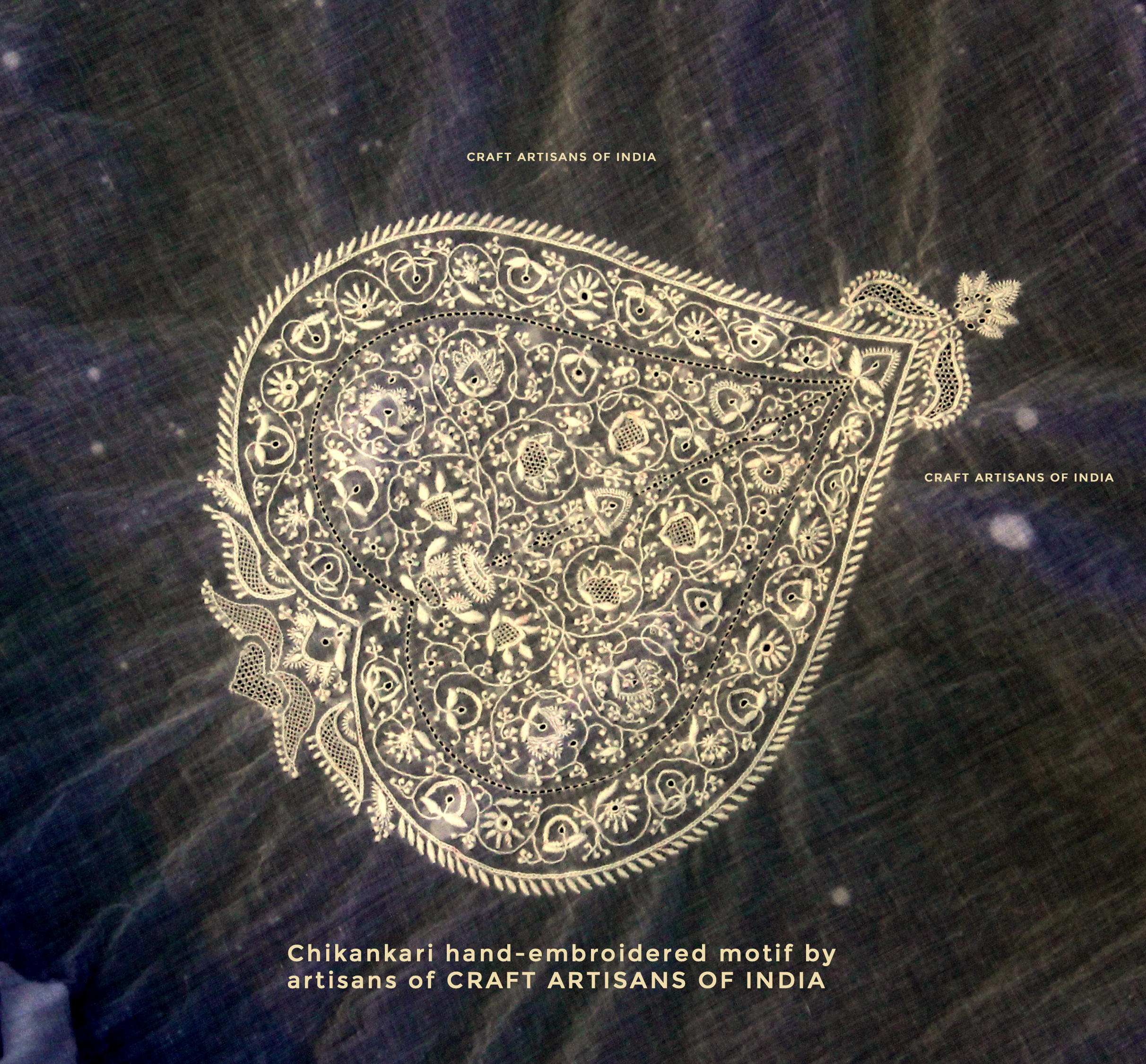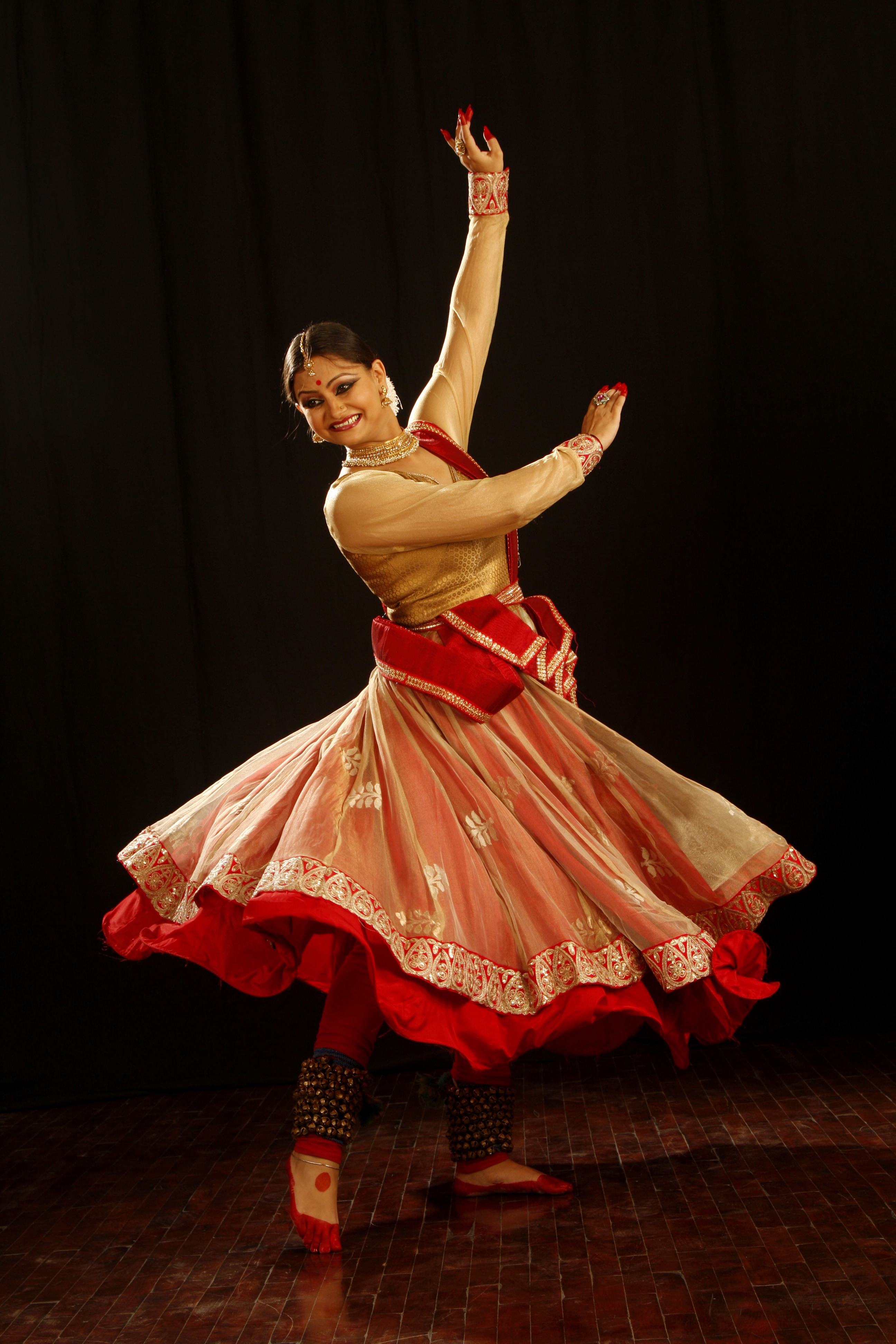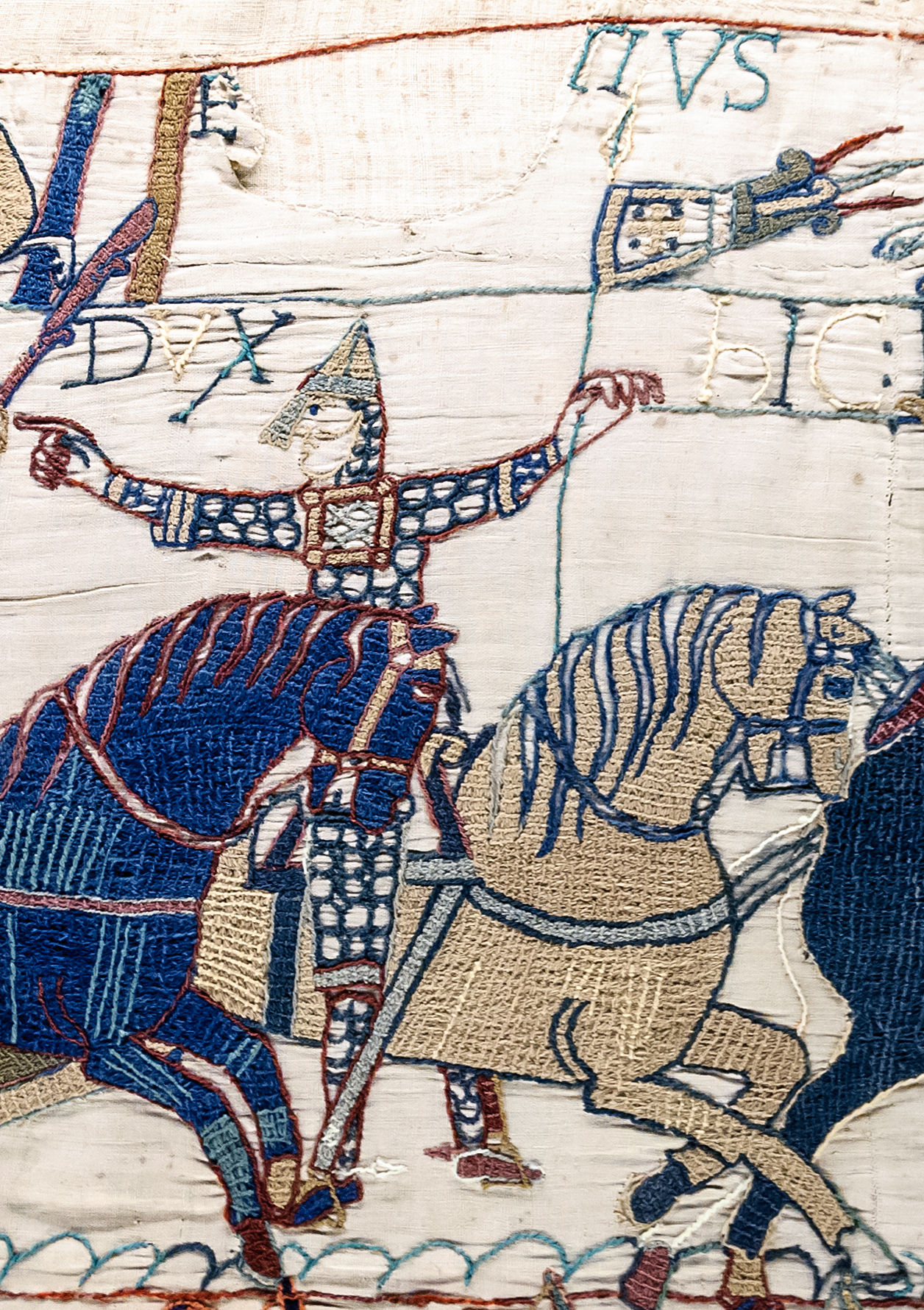|
Chikan (embroidery)
] Chikankari (, ) is a traditional embroidery style from Lucknow, India. Translated, the word means embroidery (using thread or wire), and it is one of Lucknow's best known textile decoration styles. The main market in Lucknow for Chikankari based products is Chowk. Production is mainly based in Lucknow and in the adjoining districts. Origin There are references to embroidery similar to chikan work in India as early as 3rd century BC by Megasthenes, who mentioned use of flowered muslins by Indians, but these embroidered patterns lacked the characteristic features of chikan, such as colour, ornamentation, or any notable embellishment. According to Laila Tyabji, chikankari stems from the white-on-white embroidery of Shiraz came to India as part of a culture of Persian nobles at the Mughal court. There is also a tale that mentions how a traveler taught chikan to a peasant in return of water to drink. The most popular origin story credits Noor Jahan, Mughal empress and wife of Ja ... [...More Info...] [...Related Items...] OR: [Wikipedia] [Google] [Baidu] |
Craft Artisans Of India 02
A craft or trade is a pastime or an occupation that requires particular skills and knowledge of skilled work. In a historical sense, particularly the Middle Ages and earlier, the term is usually applied to people occupied in small scale production of goods, or their maintenance, for example by tinkers. The traditional term ''craftsman'' is nowadays often replaced by ''artisan'' and by ''craftsperson''. Historically, the more specialized crafts with high-value products tended to concentrate in urban centers and their practitioners formed guilds. The skill required by their professions and the need to be permanently involved in the Trade, exchange of goods often demanded a higher level of education, and craftspeople were usually in a more privileged position than the peasantry in Complex society, societal hierarchy. The households of artisans were not as self-sufficient as those of people engaged in agricultural work, and therefore had to rely on the exchange of goods. Some cr ... [...More Info...] [...Related Items...] OR: [Wikipedia] [Google] [Baidu] |
Lace
Lace is a delicate fabric made of yarn or thread in an open weblike pattern, made by machine or by hand. Generally, lace is split into two main categories, needlelace and bobbin lace, although there are other types of lace, such as knitted or crocheted lace. Other laces such as these are considered as a category of their specific craft. Knitted lace, therefore, is an example of knitting. This article considers both needle lace and bobbin lace. While some experts say both needle lace and bobbin lace began in Italy in the late 1500s, there are some questions regarding its origins. Originally linen, silk, gold, or silver threads were used. Now lace is often made with cotton thread, although linen and silk threads are still available. Manufactured lace may be made of synthetic fiber. A few modern artists make lace with a fine copper or silver wire instead of thread. Etymology The word lace is from Middle English, from Old French ''las'', noose, string, from Vulgar Latin">-4; ... [...More Info...] [...Related Items...] OR: [Wikipedia] [Google] [Baidu] |
Culture Of Uttar Pradesh
The Culture of Uttar Pradesh is an Indian culture which has its roots in Hindi, Bhojpuri and Urdu literature, music, fine arts, drama and cinema. Lucknow, the capital of Uttar Pradesh, has historical monuments including Bara Imambara and Chhota Imambara, and has preserved the damaged complex of the Oudh-period British Resident's quarters, which are being restored. Urban culture Varanasi's ghats (bathing steps along the river) draws pilgrims year-round who bathe in the Ganges River. Mathura's celebrations of Holi festival attract many tourists. Thousands gather at Allahabad (Prayagraj) to take part in the annual Magh Mela festival on the banks of the Ganges which is organised on a larger scale every 12th year, when it is called the Kumbha Mela, where over 10 million Hindu pilgrims congregate –The largest peaceful gathering of human beings in the world. Badaun is a religiously significant city whose historical monuments and tombs attract thousand of tourists annually ... [...More Info...] [...Related Items...] OR: [Wikipedia] [Google] [Baidu] |
Culture Of Lucknow
Culture ( ) is a concept that encompasses the social behavior, institutions, and norms found in human societies, as well as the knowledge, beliefs, arts, laws, customs, capabilities, attitudes, and habits of the individuals in these groups.Tylor, Edward. (1871). ''Primitive Culture''. Vol 1. New York: J. P. Putnam's Son Culture often originates from or is attributed to a specific region or location. Humans acquire culture through the learning processes of enculturation and socialization, which is shown by the diversity of cultures across societies. A cultural norm codifies acceptable conduct in society; it serves as a guideline for behavior, dress, language, and demeanor in a situation, which serves as a template for expectations in a social group. Accepting only a monoculture in a social group can bear risks, just as a single species can wither in the face of environmental change, for lack of functional responses to the change. Thus in military culture, valor is coun ... [...More Info...] [...Related Items...] OR: [Wikipedia] [Google] [Baidu] |
Embroidery In India
Embroidery is the art of decorating Textile, fabric or other materials using a Sewing needle, needle to stitch Yarn, thread or yarn. It is one of the oldest forms of Textile arts, textile art, with origins dating back thousands of years across various cultures. Common Embroidery stitch, stitches found in early embroidery include the chain stitch, Buttonhole stitch, buttonhole or blanket stitch, running stitch, satin stitch, and cross stitch. Modern embroidery continutes to utilize traditional techniques, though many contemporary stitches are exclusive to machine embroidery. Embroidery is commonly used to embellish accessories and garments is usually seen on quilts, clothing, and accessories. In addition to thread, embroidery may incorporate materials such as Pearl, pearls, Bead, beads, Quill, quills, and Sequin, sequins to highlight texture and design. Today, embroidery serves both decorative and functional purposes and is utilized in fashion expression, cultural identity, and ... [...More Info...] [...Related Items...] OR: [Wikipedia] [Google] [Baidu] |
Farooque Shaikh
Farooq Sheikh (25 March 1948 − 28 December 2013) was an Indian actor, philanthropist and television presenter. He was best known for his work in Hindi films from 1973 to 1993 and for his work in television between 1988 and 2002. He returned to acting in films in 2008 and continued to do so until his death on 28 December 2013. His major contribution was in Parallel Cinema or the New Indian Cinema. He worked with directors like Satyajit Ray, Sai Paranjpye, Muzaffar Ali, Hrishikesh Mukherjee, Ayan Mukherjee and Ketan Mehta. He acted in serials and shows on television and performed on stage in productions such as '' Tumhari Amrita'' (1992), alongside Shabana Azmi, directed by Feroz Abbas Khan, and presented the TV show, '' Jeena Isi Ka Naam Hai'' (Season 1). He won the 2010 National Film Award for Best Supporting Actor for ''Lahore''. Personal life Sheikh was born in 1948 at Amroli, 90 km off Vadodara in Naswadi taluka, Gujarat, India to Farida and Mustafa Sheikh. His father ... [...More Info...] [...Related Items...] OR: [Wikipedia] [Google] [Baidu] |
Shabana Azmi
Shabana Azmi (born 18 September 1950) is an Indian actress of film, television and theatre. Her career in the Hindi cinema, Hindi film industry has spanned Shabana Azmi filmography, over 160 films, mostly within independent and neorealist parallel cinema, though her work extended to mainstream films as well as a number of international projects. One of India's most acclaimed actresses, Azmi is known for her portrayals of distinctive, often unconventional female characters across several genres. She has won a record of five National Film Award for Best Actress, National Film Awards for Best Actress, in addition to five Filmfare Awards and several international accolades. The Government of India honoured her with the Padma Shri in 1998 and the Padma Bhushan in 2012. The daughter of poet Kaifi Azmi and stage actress Shaukat Azmi, she is an alumna of Film and Television Institute of India of Pune. Azmi made her film debut in 1974 with ''Ankur (film), Ankur'' and soon became one of t ... [...More Info...] [...Related Items...] OR: [Wikipedia] [Google] [Baidu] |
Muzaffar Ali
Muzaffar Ali (born 21 October 1944) is an Indian filmmaker, fashion designer, poet, artist, cultural revivalist, and social worker. Biography Raja Muzaffar was born in Lucknow of the erstwhile United Provinces, British India, in 1944. The eldest son of Raja Syed Sajid Husain Ali, then-ruling prince of the principality of Kotwara in Gola Gokaran Nath, Muzaffar attended La Martiniere, Lucknow, and graduated in science from Aligarh Muslim University. He worked in advertising before turning to film making. His early directorial films are '' Gaman'' (1978) and '' Umrao Jaan'' (1981). He also directed and starred in the TV series ''Jaan-e-Alam''. Personal Life Muzaffar Ali is currently married to Meera Ali, an architect and fashion designer, with whom he has a daughter Sama, who is also a fashion designer. He later became a fashion designer, creating a fashion label with Meera in 1990. He was earlier married to the art historian Geeti Sen, with whom he has a son Murad Ali, a film ... [...More Info...] [...Related Items...] OR: [Wikipedia] [Google] [Baidu] |
Anjuman (1986 Film)
''Anjuman'' (English: ''Congregation'') is a 1986 Hindi drama film directed by Muzaffar Ali, starring Shabana Azmi, Farooque Shaikh and Rohini Hattangadi in lead roles. Set in Lucknow, it deals with exploitation of women and problems of local " chikan" embroidery workers. ''Anjuman'' has music by Khayyam, with lyrics by noted Urdu poet Shahryar, with three songs sung by lead actress Shabana Azmi, who agreed to do playback singing. Noted actor Farooque Shaikh worked in three films with Muzaffar Ali, with the others being ''Gaman'' (1978) and '' Umrao Jaan'' (1981). Cast * Shabana Azmi as Anjuman * Farooq Shaikh as Sajid (Sajju) * Rohini Hattangadi as Dr. Suchitra Sharma * Mushtaq Khan as Banke Nawab * Shaukat Azmi Music The music was by Khayyam, with lyrics by Shahryar and Faiz Ahmad Faiz, with three song sung by Shabana Azmi, a rare feat for her career. * "Kab Yaad Me Tera Saath Nahin" — Jagjit Kaur, Khayyam * "Main Raah Kab Se Nayi Zindagi Ki" — Shabana Azmi Shab ... [...More Info...] [...Related Items...] OR: [Wikipedia] [Google] [Baidu] |
The Times Of India
''The Times of India'' (''TOI'') is an Indian English-language daily newspaper and digital news media owned and managed by the Times Group. It is the List of newspapers in India by circulation, third-largest newspaper in India by circulation and List of newspapers by circulation, largest selling English-language daily in the world. It is the oldest English-language newspaper in India, and the second-oldest Indian newspaper still in circulation, with its first edition published in 1838. It is nicknamed as "The Old Lady of Bori Bunder", and is a newspaper of record. Near the beginning of the 20th century, Lord Curzon, the Viceroy of India, called ''TOI'' "the leading paper in Asia". In 1991, the BBC ranked ''TOI'' among the world's six best newspapers. It is owned and published by Bennett, Coleman & Co. Ltd. (BCCL), which is owned by the Sahu Jain family. In the Brand Trust Report India study 2019, ''TOI'' was rated as the most trusted English newspaper in India. In a 2021 surve ... [...More Info...] [...Related Items...] OR: [Wikipedia] [Google] [Baidu] |
Geographical Indication
A geographical indication (GI) is a name or sign used on products which corresponds to a specific geographical location or origin (e.g., a town or region). The use of a geographical indication, as an indication of the product's source, is intended as a certification that the product possesses certain qualities, is made according to traditional methods, or enjoys a good reputation due to its geographical origin. Article 22.1 of the TRIPS Agreement defines geographical indications as ''"...indications which identify a good as originating in the territory of a Member World_Trade_Organization.html" ;"title="f the World Trade Organization">f the World Trade Organization or a region or locality in that territory, where a given quality, reputation or other characteristic of the good is essentially attributable to its geographical origin."'' ''Appellation d'origine contrôlée'' ('Appellation of origin') is a sub-type of geographical indication where quality, method, and reputation o ... [...More Info...] [...Related Items...] OR: [Wikipedia] [Google] [Baidu] |
Geographical Indication Registry (India)
The Office of the Controller General of Patents, Designs and Trade Marks (CGPDTM) generally known as the Indian Patent Office, is an agency under the Department for Promotion of Industry and Internal Trade which administers the Indian law of Patents, Designs and Trade Marks. History Foundation On 28 February 1856, the Government of India promulgated legislation to grant what was then termed as "exclusive privileges for the encouragement of inventions of new manufactures". On 3 March 1856, a civil engineer, George Alfred DePenning of 7, Grant's Lane, Calcutta petitioned the Government of India for grant of exclusive privileges for his invention — "An Efficient Punkah Pulling Machine". On 2 September, DePenning, submitted the Specifications for his invention along with drawings to illustrate its working. These were accepted and the invention was granted the first ever Intellectual Property protection in India. Amendments to the Patents Act & Rules Amendments (in 1999, 2002, 2 ... [...More Info...] [...Related Items...] OR: [Wikipedia] [Google] [Baidu] |







